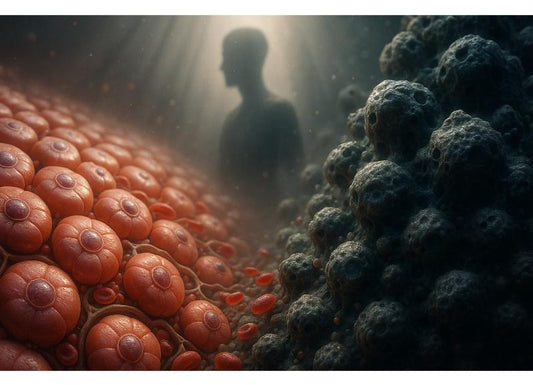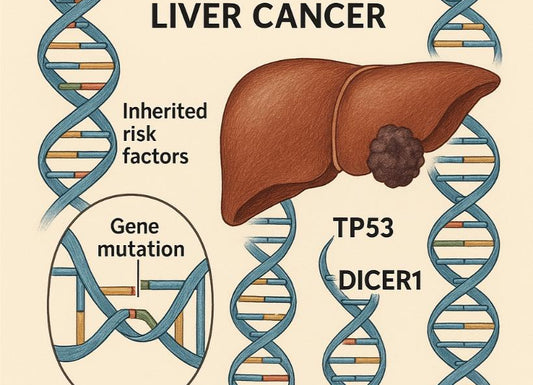Stage 5 Kidney Disease: What It Means and How to Manage It
 Written By
Abel Tamirat, MD
Written By
Abel Tamirat, MD

Stage 5 kidney disease — also known as end-stage renal disease (ESRD) — is the most advanced form of chronic kidney disease (CKD). At this stage, the kidneys have lost nearly all their ability to function effectively, meaning they can no longer filter waste and excess fluids from the blood.
This doesn’t mean life is over. Many people with stage 5 kidney disease live fulfilling lives through treatment, lifestyle adjustments, and strong medical support.
This article explains what happens in stage 5 kidney disease, how it’s managed, and what you can do to protect your health and quality of life.
Understanding Stage 5 Kidney Disease
Your kidneys perform many critical roles — filtering toxins, balancing electrolytes, regulating blood pressure, and helping make red blood cells. When they stop functioning properly, harmful waste products build up in the blood, leading to symptoms that affect nearly every part of the body.
Stage 5 kidney disease is defined by an estimated glomerular filtration rate (eGFR) of less than 15 mL/min, meaning your kidneys are functioning at less than 15% of normal capacity.
At this stage, treatment focuses on replacing kidney function through dialysis or kidney transplant and managing symptoms to maintain comfort and health.
Common Causes of Stage 5 Kidney Disease
Several conditions can lead to kidney failure over time, including:
-
Diabetes: The leading cause of kidney disease worldwide. High blood sugar damages kidney blood vessels.
-
High blood pressure: Persistent pressure damages the tiny filters (nephrons) in your kidneys.
-
Glomerulonephritis: Inflammation of the kidney’s filtering units.
-
Polycystic kidney disease: A genetic disorder that causes cysts to grow in the kidneys.
-
Autoimmune diseases such as lupus.
-
Repeated kidney infections or blockages.
Symptoms of Stage 5 Kidney Disease

As waste and fluid build up in the body, you may notice:
-
Persistent fatigue or weakness.
-
Nausea, vomiting, or loss of appetite.
-
Swelling in the feet, ankles, or face (edema).
-
Shortness of breath from fluid buildup in the lungs.
-
Itchy or dry skin.
-
Muscle cramps, especially at night.
-
Trouble sleeping or concentrating.
-
Changes in urination — either very little or none at all.
In some cases, people experience uremic symptoms, including confusion, metallic taste, or breath that smells like ammonia. These indicate that toxins are accumulating and medical intervention is urgently needed.
Diagnosing Stage 5 Kidney Disease
Your healthcare provider will use a combination of tests to confirm advanced kidney failure, such as:
-
Blood tests: To check creatinine, blood urea nitrogen (BUN), and electrolyte levels.
-
Urine tests: To measure protein and waste levels.
-
Imaging: Ultrasound or CT scans to assess kidney size and structure.
-
eGFR: To measure how well your kidneys filter blood.
If you are diagnosed with stage 5 kidney disease, your care team will create a personalized treatment plan that often includes preparing for dialysis or transplant evaluation.
Learn more about early detection and prevention in our Complete Guide to At-Home Kidney Function Tests.
Treatment Options for Stage 5 Kidney Disease

1. Dialysis
Dialysis takes over part of the kidney’s function by removing waste and extra fluid from the blood. There are two main types:
-
Hemodialysis: Blood is filtered through a machine, usually at a dialysis center three times per week.
-
Peritoneal dialysis: A cleansing fluid is introduced into the abdomen through a catheter and then drained, allowing waste removal at home.
Your doctor will help determine which type best fits your health and lifestyle.
2. Kidney Transplant
A transplant can restore kidney function and eliminate the need for dialysis.
You may receive a kidney from:
-
A living donor (often a family member or friend).
-
A deceased donor through a transplant waiting list.
While waiting for a transplant, dialysis keeps the body in balance and helps manage symptoms.
3. Conservative Management (Non-Dialysis Care)
Some people choose not to undergo dialysis, especially if they have multiple health conditions. In such cases, treatment focuses on symptom relief, comfort, and maintaining the best possible quality of life.
This approach is guided by a palliative care team and includes medications, fluid management, and nutrition support.
You can monitor your kidney health easily with the Ribbon Checkup At-Home Urine Test — a simple way to track key kidney indicators.
Nutrition and Lifestyle for Stage 5 Kidney Disease

A kidney-friendly diet plays a major role in managing symptoms and slowing complications.
Key dietary recommendations include:
-
Limit sodium: Helps reduce swelling and blood pressure.
-
Control potassium: Found in bananas, oranges, potatoes, and tomatoes — too much can cause heart problems.
-
Restrict phosphorus: Found in dairy, nuts, and cola — high levels can weaken bones.
-
Manage protein intake: Your dietitian will help adjust protein depending on whether you are on dialysis.
-
Stay hydrated carefully: You may need to limit fluids to prevent swelling and shortness of breath.
A registered dietitian specializing in kidney disease can design a personalized plan to meet your needs.
Complications to Watch For
Without treatment, stage 5 kidney disease can lead to complications such as:
-
Anemia (low red blood cell count).
-
Bone weakness and fractures.
-
Heart failure or fluid in the lungs.
-
High potassium levels (hyperkalemia).
-
Metabolic acidosis (acid buildup in the blood).
Prompt treatment and regular monitoring help prevent life-threatening emergencies.
Learn how to recognize and test for urinary infections in our UTI Tests: Essential Guide to Understanding and Managing Your Health.
Emotional and Mental Health Support
Living with stage 5 kidney disease can be emotionally challenging. It’s common to feel anxious or overwhelmed when adjusting to dialysis or transplant preparation.
Support options include:
-
Counseling or therapy.
-
Support groups for patients and families.
-
Social workers to help with insurance and treatment planning.
Taking care of your mental well-being is just as important as physical treatment.
Life Expectancy With Stage 5 Kidney Disease
Life expectancy varies widely depending on factors such as age, cause of kidney failure, overall health, and treatment type.
-
With dialysis: Many people live 5 to 10 years or more, and some live 20 years or longer with consistent care.
-
After kidney transplant: Survival rates are significantly higher — many recipients live 15 to 20 years or more with a healthy kidney.
Without dialysis or transplant, life expectancy may be only a few weeks to months, depending on individual health and symptom management.
The key takeaway: early treatment, consistent follow-up, and healthy lifestyle choices make a major difference.
Meanwhile, monitoring your liver and kidney health regularly using At-Home Liver Tests can help detect related organ stress early.
Preventing Further Complications
Even at stage 5, managing risk factors can improve quality of life.
-
Take all prescribed medications.
-
Control blood pressure and blood sugar.
-
Avoid non-prescribed painkillers (NSAIDs) that can worsen kidney damage.
-
Stay active as much as possible.
-
Keep all medical appointments for dialysis, labs, and checkups.
See our full Complete Guide to At-Home Kidney Function Tests for what to expect and how to interpret your results.
The Bottom Line
Stage 5 kidney disease is a serious but manageable condition. With dialysis, transplant, or supportive care, many people live meaningful lives for years after diagnosis.
Working closely with your healthcare team, following a kidney-friendly diet, and caring for your mental health are essential steps in maintaining comfort, independence, and hope.
You are not alone — and with the right care plan, living well with stage 5 kidney disease is possible.
Want to check your kidney function from home?
You can take an at-home kidney and metabolic health test through Ribbon Checkup and get results in days.
Related Resources
Want to dive deeper into kidney health? Check out these helpful reads:
-
The Complete Guide to At-Home Kidney Function Tests – Stay on top of kidney health with simple home testing.
-
How Long Do Kidney Stones Last? Must Know – Get clarity on how long kidney stones typically last.
-
What Can Mimic Kidney Stone Pain? – Learn about other conditions that cause similar pain.
References
Cleveland Clinic. (2023). Kidney failure: Stages, ESRD, causes, symptoms & treatment. https://my.clevelandclinic.org/health/diseases/17689-kidney-failure
Kidney Disease: Improving Global Outcomes (KDIGO). (2024). KDIGO 2024 clinical practice guideline for the evaluation and management of chronic kidney disease. Kidney International, 105(Suppl 4S), S117–S314. https://kdigo.org/wp-content/uploads/2024/03/KDIGO-2024-CKD-Guideline.pdf
Mayo Clinic. (2023). End-stage renal disease: Diagnosis & treatment. https://www.mayoclinic.org/diseases-conditions/end-stage-renal-disease/diagnosis-treatment/drc-20354538
National Institute of Diabetes and Digestive and Kidney Diseases. (2025). Choosing a treatment for kidney failure. https://www.niddk.nih.gov/health-information/kidney-disease/kidney-failure/choosing-treatment
National Institute of Diabetes and Digestive and Kidney Diseases. (2025). Kidney transplant. https://www.niddk.nih.gov/health-information/kidney-disease/kidney-failure/kidney-transplant
National Kidney Foundation. (n.d.). Stage 5 chronic kidney disease (CKD). https://www.kidney.org/kidney-topics/stage-5-chronic-kidney-disease-ckd
U.S. National Library of Medicine. (2025, July 24). Kidney failure. MedlinePlus. https://medlineplus.gov/kidneyfailure.html

Dr. Abel Tamirat is a licensed General Practitioner and ECFMG-certified international medical graduate with over three years of experience supporting U.S.-based telehealth and primary care practices. As a freelance medical writer and Virtual Clinical Support Specialist, he blends frontline clinical expertise with a passion for health technology and evidence-based content. He is also a contributor to Continuing Medical Education (CME) programs.



